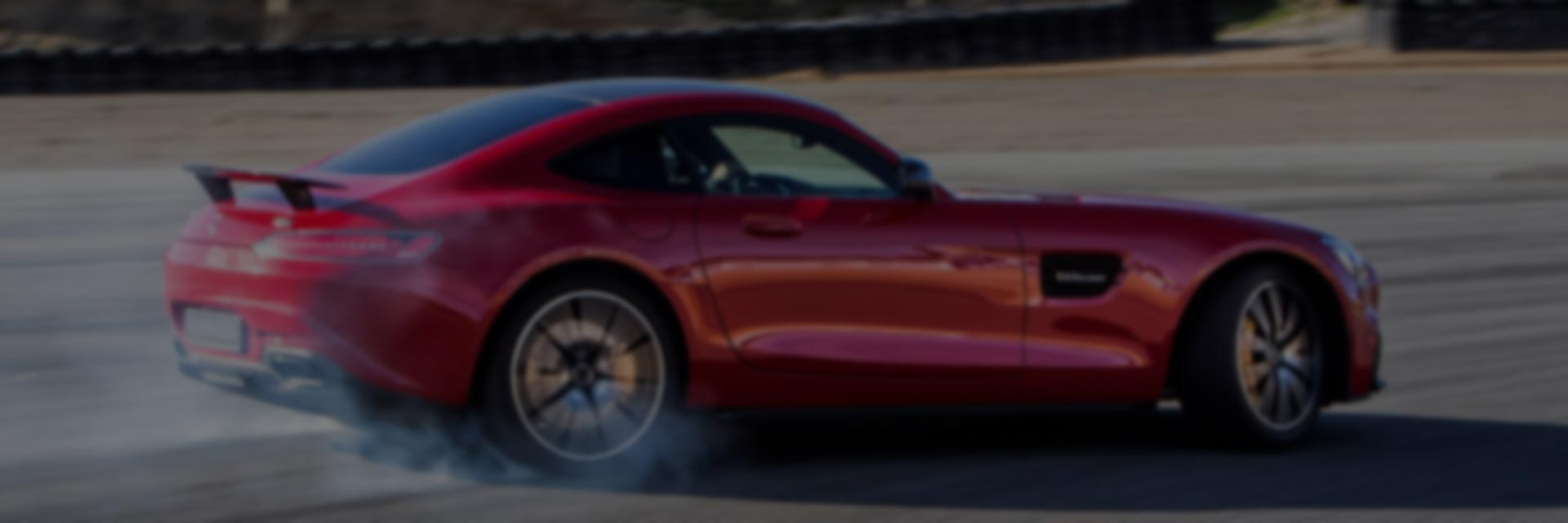< Back ×
My Vehicle Change Vehicle
2008 Cadillac DTS
< Back to View All
Wheels & Related Parts
- Department
- Prices
OEM (Genuine) 2008 Cadillac DTS Wheel, Alloy
PartNumber: 9596592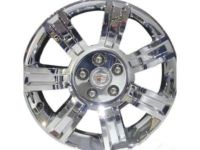 Product Specifications
Product Specifications- Notes: 18x7.5, Code Pwg
- Other Names: Wheel Alloy
- Item Dimensions: 27.4 x 27.2 x 12.5 inches
- Item Weight: 26.10 Pounds
- Fitment Type: Direct Replacement
- Replaces: 19167777
- Part Description: 2008 Cadillac DTS Wheel, Alloy
Vehicle Fitment- 2008 Cadillac DTS | Base, Livery, Luxury, Platinum, Premium | 8 Cyl 4.6 L GAS
$506.63 MSRP:$762.74You Save: $256.11 (34%)OEM (Genuine) 2008 Cadillac DTS Spare Wheel
PartNumber: 9594807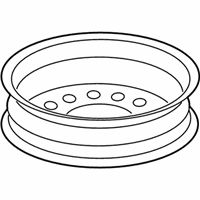 Product Specifications
Product Specifications- Notes: W/O Full Size Spare, W/Aluminum
- Other Names: Spare Wheel
- Item Dimensions: 17.2 x 18.0 x 6.4 inches
- Fitment Type: Direct Replacement
- Part Description: 2008 Cadillac DTS Spare Wheel
Vehicle Fitment- 2008 Cadillac DTS | Base, Livery, Luxury, Platinum, Premium | 8 Cyl 4.6 L GAS
$94.26 MSRP:$142.21You Save: $47.95 (34%)OEM (Genuine) 2008 Cadillac DTS Wheel, Alloy
PartNumber: 9597465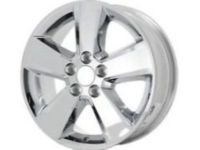 Product Specifications
Product Specifications- Notes: 18x7.5, Code P31
- Other Names: Wheel Alloy
- Item Dimensions: 26.9 x 27.2 x 12.1 inches
- Item Weight: 23.90 Pounds
- Fitment Type: Direct Replacement
- Replaces: 19153399
- Part Description: 2008 Cadillac DTS Wheel, Alloy
Vehicle Fitment- 2008 Cadillac DTS | Base, Livery, Luxury, Platinum, Premium | 8 Cyl 4.6 L GAS
OEM (Genuine) 2008 Cadillac DTS Wheel, Alloy
PartNumber: 9597470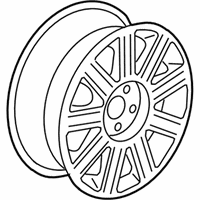 Product Specifications
Product Specifications- Notes: 17x7, Code N80
- Other Names: Wheel Alloy
- Item Dimensions: 27.4 x 26.4 x 12.4 inches
- Item Weight: 24.40 Pounds
- Fitment Type: Direct Replacement
- Part Description: 2008 Cadillac DTS Wheel, Alloy
Vehicle Fitment- 2008 Cadillac DTS | Base, Luxury, Platinum | 8 Cyl 4.6 L GAS
OEM (Genuine) 2008 Cadillac DTS Wheel, Alloy
PartNumber: 9596590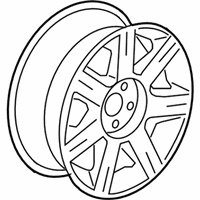 Product Specifications
Product Specifications- Notes: 17x7, Code Pa2
- Other Names: Wheel Alloy
- Item Dimensions: 21.3 x 20.7 x 16.4 inches
- Item Weight: 23.40 Pounds
- Fitment Type: Direct Replacement
- Part Description: 2008 Cadillac DTS Wheel, Alloy
Vehicle Fitment- 2008 Cadillac DTS | Base, Livery, Luxury, Platinum, Premium | 8 Cyl 4.6 L GAS
OEM (Genuine) 2008 Cadillac DTS Wheel Rim, Pkg
PartNumber: 19301000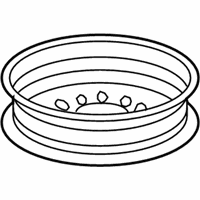 Product Specifications
Product Specifications- Notes: W/Full Size Spare, Chrome; 17x8, Code Qa8
- Other Names: Spare Wheel, Wheel Alloy
- Item Dimensions: 21.6 x 20.8 x 16.7 inches
- Item Weight: 29.90 Pounds
- Fitment Type: Direct Replacement
- Replaces: 9597495, 19152611, 19152610, 9597496, 09597496, 09597495
- Part Description: 2008 Cadillac DTS Wheel Rim, Pkg
Vehicle Fitment- 2008 Cadillac DTS | Base, Luxury, Platinum | 8 Cyl 4.6 L GAS
OEM (Genuine) 2008 Cadillac DTS Wheel, Alloy
PartNumber: 9596588 Product Specifications
Product Specifications- Notes: 17x7, Code Pff
- Other Names: Wheel Alloy
- Item Dimensions: 20.8 x 21.0 x 16.6 inches
- Item Weight: 22.80 Pounds
- Fitment Type: Direct Replacement
- Part Description: 2008 Cadillac DTS Wheel, Alloy
Vehicle Fitment- 2008 Cadillac DTS | Base, Livery, Luxury, Platinum, Premium | 8 Cyl 4.6 L GAS
OEM (Genuine) 2008 Cadillac DTS Wheel Rim-17X4 Compensator Spare Steel
PartNumber: 9595676 Product Specifications
Product Specifications- Notes: W/O Full Size Spare, W/O Aluminum
- Other Names: Compact Spare, Spare Wheel
- Material: Steel
- Fitment Type: Direct Replacement
- Part Description: 2008 Cadillac DTS Wheel Rim-17X4 Compensator Spare Steel
Vehicle Fitment- 2008 Cadillac DTS | Base, Livery, Luxury, Platinum, Premium | 8 Cyl 4.6 L GAS
OEM (Genuine) 2008 Cadillac DTS Wheel Rim-18X7.5 Aluminum, Painted. *Painted
PartNumber: 9595297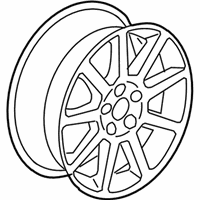 Product Specifications
Product Specifications- Notes: 18x7.5, Code Pz3
- Other Names: Wheel Alloy
- Item Dimensions: 26.3 x 26.6 x 11.5 inches
- Item Weight: 24.60 Pounds
- Fitment Type: Direct Replacement
- Replaces: 88967208
- Part Description: 2008 Cadillac DTS Wheel Rim-18X7.5 Aluminum, Painted. *Painted
Vehicle Fitment- 2008 Cadillac DTS | Base, Luxury, Platinum | 8 Cyl 4.6 L GAS
FAQ for Alloy Wheels Repair
Q: What should I know about a tire rotation?
A:
You can rotate the tires and wheels at frequent intervals to equalize wear. Radial tires tend to wear faster in the shoulder area, particularly in front positions. Radial tires in non-drive locations may develop an irregular wear pattern that may increase tire noise. This makes regular rotation especially necessary. You should always use a 4-wheel rotation. After rotation, check the wheel nuts for specified torque. Then, set the tire pressure.
By Bob
GM Specialist
01/11/2022Q: What should be noticed when inflating the tire?
A:
You mustn't stand over the tire when inflating to avoid serious personal injury. The bead may break when the bead snaps over the safety hump. You should not exceed 275 kPa (40 psi) pressure when inflating any tire if beads are not seated. If 275 kPa (40 psi) pressure will not seat the beads, deflate, relubricate the beads and reinflate. Overinflation may cause the bead to break and cause serious personal injury.
By Bob
GM Specialist
01/11/2022Q: What should be noticed when mounting the tires?
A:
You will need to use an approved tire mounting lubricant. You mustn't use silicon or corrosive base compounds to lubricate the tire bead and the wheel rim. A silicon-based compound can cause the tire to slip on the rim. A corrosive type of compound can cause tire or rim deterioration.
By Bob
GM Specialist
01/11/2022Q: What's the procedure for internal inspection of the tire?
A:
You can Spread the beads and mark the puncture with a tire crayon, then inspect the inner tire for any signs of internal damage, remove the puncturing object, noting the direction of the penetration, next probe the injury with a blunt awl to determine the extent and direction of the injury, then remove any loose foreign material from the injury. What's more, punctures exceeding 6.35 mm (1/4 in) should not be repaired.
By Bob
GM Specialist
01/11/2022Q: What should be noticed when you dismount tires?
A:
You will need to use a tire changing machine to dismount tires. You should not use hand tools or tire irons alone to remove the tire from the wheel. Damage to the tire beads or the wheel rim could result.
By Bob
GM Specialist
01/11/2022Q: What are the basic steps for tire puncture repair?
A:
There are three basic steps for tire puncture repair: remove the tire from the wheel for inspection and repair, fill the injury (puncture) to keep moisture out, then seal the inner liner with a repair unit to prevent air loss.
By Bob
GM Specialist
01/11/2022Q: What product should I use to clean the leak area?
A:
You should use general-purpose cleaners such as 3M(R), P/N 08984, or equivalent, to clean the leak area.
By Bob
GM Specialist
28/10/2022Q: How to evaluate the damage?
A:
You will need to inspect the wheels for damage from uncoated wheel balance weights or automatic car wash facilities, inspect the wheels for the following conditions including corrosion, scrapes, and gouges, then verify the damage is not deeper than what sanding can remove, inspect the wheels for cracks. If a wheel has cracks, you can discard the wheel. Then you can inspect the wheels for bent rim flanges. If a rim flange is bent, you should discard the wheel.
By Bob
GM Specialist
28/10/2022Q: What should be noticed when repairing the Aluminum Wheel Porosity?
A:
You will need to take care not to damage the exterior surface of the wheel.
By Bob
GM Specialist
28/10/2022Q: What should I attach importance to when refinishing the Aluminum Wheel?
A:
You shouldn't re-machine the wheel or use chemicals to strip the paint from the wheel. Besides, the wheel mounting surface and the wheel nut contact surface must remain free of paint. What's more, you can use new coated balance weights to balance the wheel.
By Bob
GM Specialist
28/10/2022See more FAQs (7)

